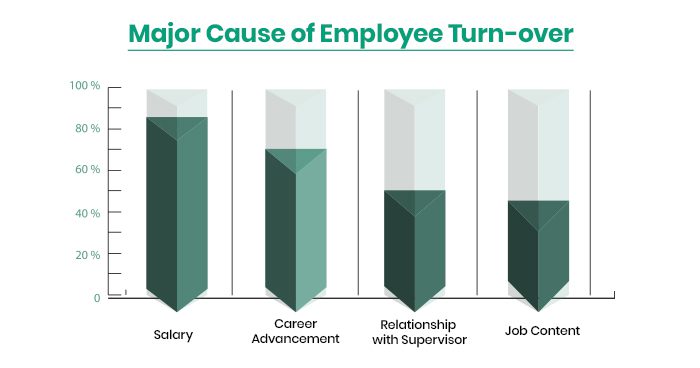“It isn’t the mountain ahead to climb that wears you out. It’s the pebble in your shoe” – Mohammed Alli, American Professional Boxer/Former Heavy Weight Champion (1942-2016)
In boxing sports, most boxers aim for a knockout early in the game because it is considered an outstanding performance to the credit of the victor in the ring when a win is obtained this way. However, some interesting matches are drawn out for long periods such that we have seen boxing matches extend up to 10, 15 or more rounds. In some rare cases, when the heat is on, and the game is intense, the fighters in the ring have been known to quit the match, known as ‘throw in the towel’. This call is often made as a final declaration of the lack of strength to continue or the belief that to persist in the fight may cause more harm than good.
In the workplace, employees often join an organisation with energy and many expectations. What binds employees and their employers is the contractual agreement; This may be explicit or implied. When it is explicit, it is clearly documented, communicated, and signed off. However, when it is implied, it is more of culture, norms, practices (e.g., International training at a certain level, inclusion in strategic committees and decision making). When the terms of either of these contracts are violated, employees may become disconnected from their employers. While some vocal members of the workforce may be seeking redress, others may withdraw psychologically, emotionally, and eventually, physically.
Preventing Employee Turnover
“Research indicates that workers have three primary needs: Interesting work, recognition for doing a good job and being let in on things that are going on in the company.” – Zig Ziglar (1926–2012) American author and motivational speaker
While employee exits are a part of an organisation’s reality, the impact can be negative when the business is not prepared with successors. Employees can leave voluntarily, but there are various reasons why it is to the advantage of the business that the turnover rate is minimal for the following reasons:
- Cost of recruitment
- Work down-time
- Time to onboard new staff
When employees are onboarded, they become assets to the business. People are part of the investment an organisation makes into its production process for which the output is optimal performance and profitability. However, investments take time to mature and yield returns. The duration and time of stay before an employee chooses to resign is almost as important as the timing of the exit itself because the organisation’s expectations of getting returns over that investment may not be realised if the employee left too early. The goal of any business should be to create a conducive environment and work conditions that ensure expectations on both sides can be met and sustained. The focus of strategic people transformation practice is to ensure that people do not ‘throw in the towel’ but can create knockout wins for the business or stay long enough in the ring to win.
Top Reasons Employees Leave
While there are numerous reasons employees may decide to call it quits, a survey, conducted by Yiu and Saner, identified the major causes of employee turnover as salary (85%), career advancement (71%), and relationships with supervisors (50%). Job content (43%) and employee recognition (33%) were also top contenders.
Some Ways to Mitigate Unwanted Employee Exits
In order to ascertain if the concerns employees raised had received attention and action from management, the survey asked respondents to identify areas in which their company had taken action to counter employee turnover. The survey indicated actions were taken in the following areas: salary increases (80%), opportunities for career advancement (73%), for recognition (63%), for training and development (57%), and for human resource policy and rules (45%).
Beyond the survey outcome shared above, based on our field and market experience over the years, we have also included some of the ways we have helped organisations respond to employee trun-over issues as indicated below:
1. Define cultural values
When organisations can align their people to values that promote the desired behaviours, the likelihood of commitment is increased. When employees can relate with organisational values that mirror their beliefs, they are more likely to stay and give their best performance and productivity.
2. Assess employee engagement levels and commitment
Early signs of dissatisfaction or displeasure usually start small but may quickly become major issues if not detected and resolved. A well-designed employee satisfaction survey has been known to detect such issues, thereby acting as pointers to areas requiring urgent interventions.
3. Identify and apply relevant employee motivation theories
Due to the workforce generation mix in the workplace, it has been discovered that people respond to programmes and incentives differently. This is because depending on their generation and situations, people are stimulated or motivated by different things. It is, therefore, important that relevant employee motivation is put in place.
4. Nip employee disengagement disconnection issues early
Whether implicit or explicit, employees can be said to have left their organisations mentally or psychologically long before they do so physically. However, when organisations detect the issues that may be brewing early enough, they can nip them in the bud before they become ‘towel in the ring’ cases
5. Involve deserving employees in business decisions
When employees feel excluded in their organisation’s decision-making process or major activities, they may become impatient or perceive that they are not relevant or wanted. Eventually, they would seek to be part of organisations where they may be appreciated.
6. Reward performance promptly
When employee performance gets appraised and done well enough by set standards, the expectation is that people are rewarded or recognised. A delayed reward can lead to a lack of trust in both leadership and the process itself.
When employees stay, the retention rate is high, and disruptions in the workflow are at a minimum level. The big challenge then is for business leaders and HR professionals to innovatively implement employee retention strategies.
At pcl., we support businesses across various sectors towards preventing employee attrition, identifying turnover risk factors and mitigating them along with the business leaders. We have been instrumental in designing interventions that have transformed these organisations and increased employee retention rates. Let us discuss this further; kindly send an email to people@phillispconsulting.net.
Written by:

Esther Amoye
Senior Consultant

